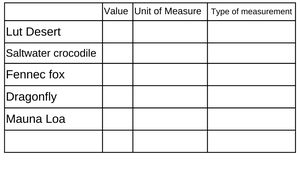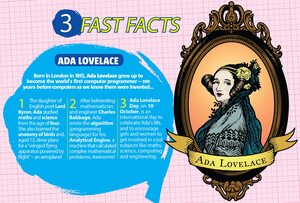The National Gallery of Art, located in Washington, D.C. is an art museum that preserves, collects, exhibits, and studies Western art, from the Middle Ages to the present, and is free to the public. Explore and learn about some of the most famous works from the National Gallery’s collection, make your own art, and share it with friends!
Spark your thinking!
1. Set up your STEAM mini spark recording page:#63: All About Art
2. Read this paragraph about the National Gallery of Art and add 3-5 details to your recording page.
The museum was founded in 1937 when the financier and philanthropist, Andrew W. Mellon, donated to the government a collection of paintings by European masters and a large sum of money to construct the gallery’s building, which was created by the architect John Russell Pope and opened in 1941.The National Gallery now holds a very large collection of European and American paintings, sculpture, decorative arts, and graphic works from the 12th to the 20th century. The museum has especially amazing holdings of works by Italian Renaissance painters, as well as by Dutch and Spanish Baroque and French Rococo artists.
3. Why are Art museums important? According to the National Art Education Association, art museum learning is a fundamental component to a high quality, effective, and balanced education. Plus, it’s fun to look at art!! What do you like about looking at art? Add a few ideas to your recording sheet.
4. Check out the famous works of art below that are located in the National Gallery of Art! Click on the name of the art and you will go to an information page. If you click on the words “image description” there is more information about the art. Record 3-5 details about each of the pieces of art on your recording page.

Georgia O’Keeffe Shell No.1


Louise Bourgeois Spider
5. Now, you can discover the world of art in a fun and easy way. Explore and learn about some of the most famous works from the National Gallery’s collection and make your own art at Paint -n- Play. Spend 8-10 minutes working on a project. Take a screenshot of your creation and add it to your recording page.
6. Share your STEAM spark recording page with your teacher/EY coordinator.
Check out the Paint and Play mini spark where you can create your own art inspired by one of the pieces from the National Gallery of Art.




 Get caught up to speed on everything you need to know about the NCAA Division I men’s and women’s basketball tournament history, better known as March Madness in this mini spark.
Get caught up to speed on everything you need to know about the NCAA Division I men’s and women’s basketball tournament history, better known as March Madness in this mini spark. The Falkland Islands (Islas Malvinas) are a remote South Atlantic archipelago. With rugged terrain and cliff-lined coasts, its hundreds of islands and islets are home to sheep farms and abundant birdlife. The capital, Stanley, sits on East Falkland, the largest island. With only around 3,000 residents, the Falkland Islands are one of the most remote and least populous territories on Earth.
The Falkland Islands (Islas Malvinas) are a remote South Atlantic archipelago. With rugged terrain and cliff-lined coasts, its hundreds of islands and islets are home to sheep farms and abundant birdlife. The capital, Stanley, sits on East Falkland, the largest island. With only around 3,000 residents, the Falkland Islands are one of the most remote and least populous territories on Earth.











